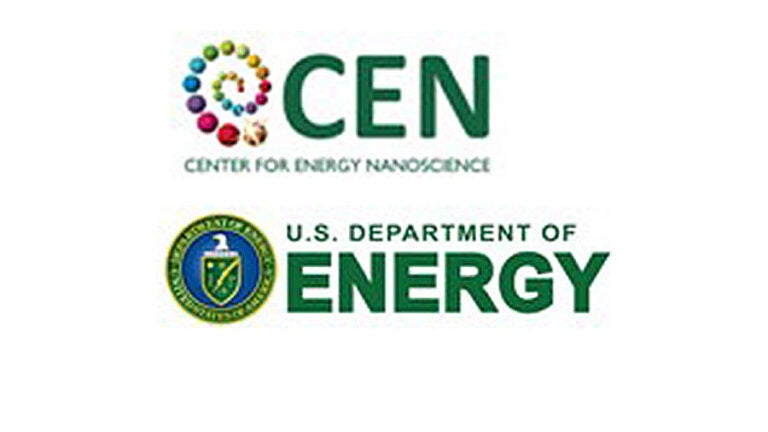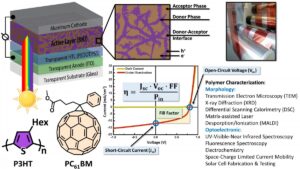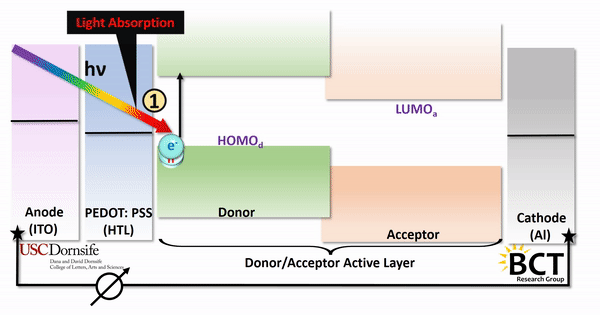BCT Group Overview
Our group is focused on the design, synthesis, and characterization of electroactive organic polymers, with the primary area of interest being solution processable polymer-based solar cells.
Current Funding & Projects
Project #1: Direct Arylation Polymerization (DArP): Toward Conjugated Polymers
National Science Foundation
Chemistry, MSN, under Award number CHE-2203113:
“Augmenting the Applicability and Sustainability of Direct Arylation Polymerization (DArP)”
Chemistry, MSN under award number CHE-1608891:
“Expanding the Scope and Enabling Potential of Direct Arylation Polymerization (DArP)”
Chemistry, MSN, under Award number CHE-1904650:
“Advancing the Performance and Capabilities of Direct Arylation Polymerization (DArP)”
Direct arylation polymerization (DArP) can attractively bypass metalation requirements (and associated cryogenic air- and water-free conditions) toward conjugated polymers, potentially enabling high quality polymers in fewer steps without toxic byproducts. Efforts in DArP emphasize developing a robust, broad-reaching, and enabling platform for the synthesis of conjugated polymers.

Project #2: Ternary Blend Polymer Solar Cells: Enhancing Device Performance through Active Layer Design
National Science Foundation
CBET, Energy for Sustainability under award number CBET-1436875:
“Conjugated Polymer-Based Ternary Blends.”
CBET, Energy for Sustainability under award number CBET-1803063:
“Elucidating Physical and Electronic Interactions in Ternary Blend Organic Solar Cells”
Ternary blend polymer solar cells are at the crossroads of material design and device fabrication. They provide a simplified alternative to tandem solar cells, which have a significantly more complex device architecture. The major focus within this research thrust is to decipher the underpinning mechanisms associated with ternary blends while synthesizing new materials that hold promise for high performing devices.

Project #3: EFRC Center for Sunthetic Control Across Length-scales for Advancing Rechargeables (SCALAR)
U.S. Department of Energy (DOE)

Project #4: Nonconjugated Pendant Electroactive Polymers
National Science Foundation
Chemistry, MSN under award number CHE-2106405:
“Reimagining the Platform for Semiconducting Polymers”

Past Fundings
Project #3: Electrochromic Polymers with High Contrast Coloration
Chromera, Inc. (Industry Collaboration)
In addition to our NSF-funded efforts, we are also supported by collaborations with industry. Beyond the projects listed herein, we actively pursue novel electroactive polymers for a wide-range of applications.

The Center for Energy Nanoscience (http://www.cen-efrc.org/), an Energy Frontier Research Center funded by the U.S. Department of Energy, Office of Science, Office of Basic Energy Sciences under Award Number DE-SC0001013

The American Chemical Society Petroleum Research Fund
(Award Number 49734-DNI10)

Polymer-Based Solar Cells
Polymer-fullerene based photovoltaic devices have attracted a great deal of attention based on the potential for realizing low-cost, solution processable, and flexible solar cells. Power conversion efficiencies in excess of 8-10% have been reported for several systems, exemplified by the poly(3-hexylthiophene)/[6,6]-phenyl-C61 butyric acid methyl ester (P3HT:PCBM) bulk heterojunction (BHJ) solar cell. These solar cells operate in a generalized four-step mechanism that is strongly dependant on the electronic and physical interactions between the donor and acceptor components. There is a great deal of interest in my group in developing new materials that will lead to polymer based solar cells with improved performance and enhanced stability. Work is focused on synthesizing new polymers and understanding how the chemical structure of the polymer influences electronic, physical, and materials properties. Our work spans the range of monomer and polymer synthesis, materials characterization, and solar cell fabrication and testing.
Polymer-Synthesis
The basis of our research group is the design and synthesis of novel electroactive polymers. It is our ability to develop an understanding of structure-function relationships in electroactive polymers and translate this into novel structures that drives our synthetic design strategy. Electroactive polymers are primarily fully conjugated polymers. These polymers are generally synthesized by step-growth polymerization methods, although chain growth polymerization can be achieved in certain catalyst-transfer polycondensation reactions. Our group explores novel methods of polymerization in addition to well known chemistries in order to realize the novel electroactive polymers that we design.
Solar Cell Fabrication and Testing.
A typical polymer solar cell is fabricated in a sandwich structure by spin-coating a blended solution of polymer and fullerene onto an ITO (Indium Tin Oxide) coated glass wafer. A top, aluminum electrode is then deposited. The performance of polymer solar cells is evaluated based on the current-voltage characteristics of the device under standardized illumination conditions as well as through more in-depth measurements such as evaluation of the external and internal quantum efficiencies. In our group we pursue solar cell optimization through our knowledge of polymer structure, morphology, and electronic properties.

